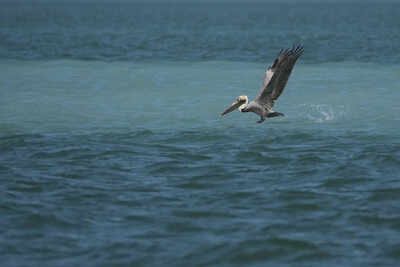Exciting Skywatching Opportunity: Comet C/2025 F2 (SWAN) Approaching Earth

Comet C/2025 F2 (SWAN) has rapidly emerged as a highlight for skywatchers in the calendar year of 2025. Discovered only in late March, this long-period comet is currently making its journey towards the inner solar system. Enthusiasts and professional astronomers alike are thrilled by the prospect of this celestial visitor, which has already begun exhibiting a visible tail, potentially becoming observable to the naked eye as it draws closer to our planet.
The origins of C/2025 F2 trace back to the distant and mysterious Oort Cloud, a region believed to be a reservoir of icy bodies surrounding our solar system. Initial calculations indicate that the comets original orbit extended thousands of astronomical units (AU) from the Sun. However, the comet's current trajectory is set to bring it to a perihelion distance of merely 0.33 AU, or approximately one-third of the distance between the Earth and the Sun, which is a remarkably close approach.
According to a report by BBC Sky at Night, the comet will reach its closest point to the Sun on May 1, 2025. This perihelion will place C/2025 F2 in an opportune position for increased outgassing and brightness due to the Sun's heat. As the comet nears our star, the intense heat will drive off gas and dust from the nucleus, resulting in the formation of a classic comet tailsometimes even multiple tailsthat could be visible to observers on Earth.
When it comes to predicting the brightness of comets, astronomers often face challenges due to the unpredictable nature of cometary activity. However, early reports from EarthSky.org and Space.com in early April 2025 indicate that C/2025 F2 (SWAN) has already brightened to a magnitude between 8.1 and 8.3. This brightness places it within the range of binocular visibility, and there is a possibility that it could reach a magnitude of 5 by mid-May, making it potentially visible to the naked eye, especially under dark sky conditions with minimal light pollution.
Currently, the comet can be observed in the pre-dawn sky, positioned low on the east-northeastern horizon. As of early April, it made its way through the constellation Pegasus and is now advancing into Andromeda. Noteworthy is its close approach to the bright star Alpheratz on April 13, a celestial alignment that has made it easier for amateur astronomers to spot the comet.
As May approaches, the comet's position will inevitably shift closer to the Suns glare. Observers will need to be vigilant, looking for it during twilight or pre-dawn hours, depending on their viewing angle and geographical latitude. For those located in the Northern Hemisphere, the best opportunities to view C/2025 F2 will be from late April through mid-May, just before the sun rises.
Astrophotographers are particularly excited about Comet SWAN, as it presents exceptional opportunities for capturing detailed images of its structure. Utilizing long exposures with wide-field telescopes or telephoto lenses can reveal the dust and ion tails, which may span across several degrees of the sky. Photographs taken in early April have already showcased a tail extending up to 2 degrees, indicating significant outgassing and a substantial coma. If the comet develops well-defined tail structures or experiences fragmentation events as it approaches perihelion, the visual spectacle could yield some stunning celestial photographs.
However, the significance of Comet C/2025 F2 extends beyond its beauty in the night sky. Long-period comets like this one provide invaluable insights into the primordial materials from which our solar system was formed. By studying its activity and composition, astronomers can glean information about the dust and ice that made up the early solar nebula. Unlike their short-period counterparts, which have been heavily altered by repeated solar encounters, long-period comets like C/2025 F2 remain largely unprocessed, making them essential targets for scientific study.
As C/2025 F2 nears the Sun, instruments both on Earth and in space will be closely monitoring its evolution, spectroscopic data, and physical changes. This research could offer new perspectives on the formation and evolution of our solar system.
If youre planning to embark on an observation quest for Comet C/2025 F2 (SWAN), here are some practical tips to enhance your viewing experience:
- Utilize binoculars or a small telescope: Even if the comet brightens enough for naked-eye visibility, using optical aids can provide enhanced detail.
- Choose a dark-sky site: Rural locations with low light pollution are your best bet for spotting the comet and its tail.
- Employ a star chart or app: Tools such as Stellarium or mobile applications can help you track the comets position relative to prominent stars.
- Stay updated: Comet brightness and visibility can fluctuate rapidly. Regular updates can be accessed from reliable sources like EarthSky.org, Space.com, and BBC Sky at Night Magazine.
As C/2025 F2 (SWAN) continues its journey toward the Sun, it is shaping up to be one of the most promising comets in recent years. Its discovery via the SWAN instrument underscores the importance of space-based solar monitoring missions in advancing our understanding of comet science. As this celestial traveler progresses along its path, we may have the chance to witness a rare and unforgettable spectacle in our skiesa sight that has not been seen by human eyes and may not recur for tens of thousands of years.
So, set your alarm clocks, gather your binoculars and cameras, and prepare to venture out before dawn. If the skies are clear and the comet maintains its activity, C/2025 F2 could very well be the comet of the year. Clear skies await!




























